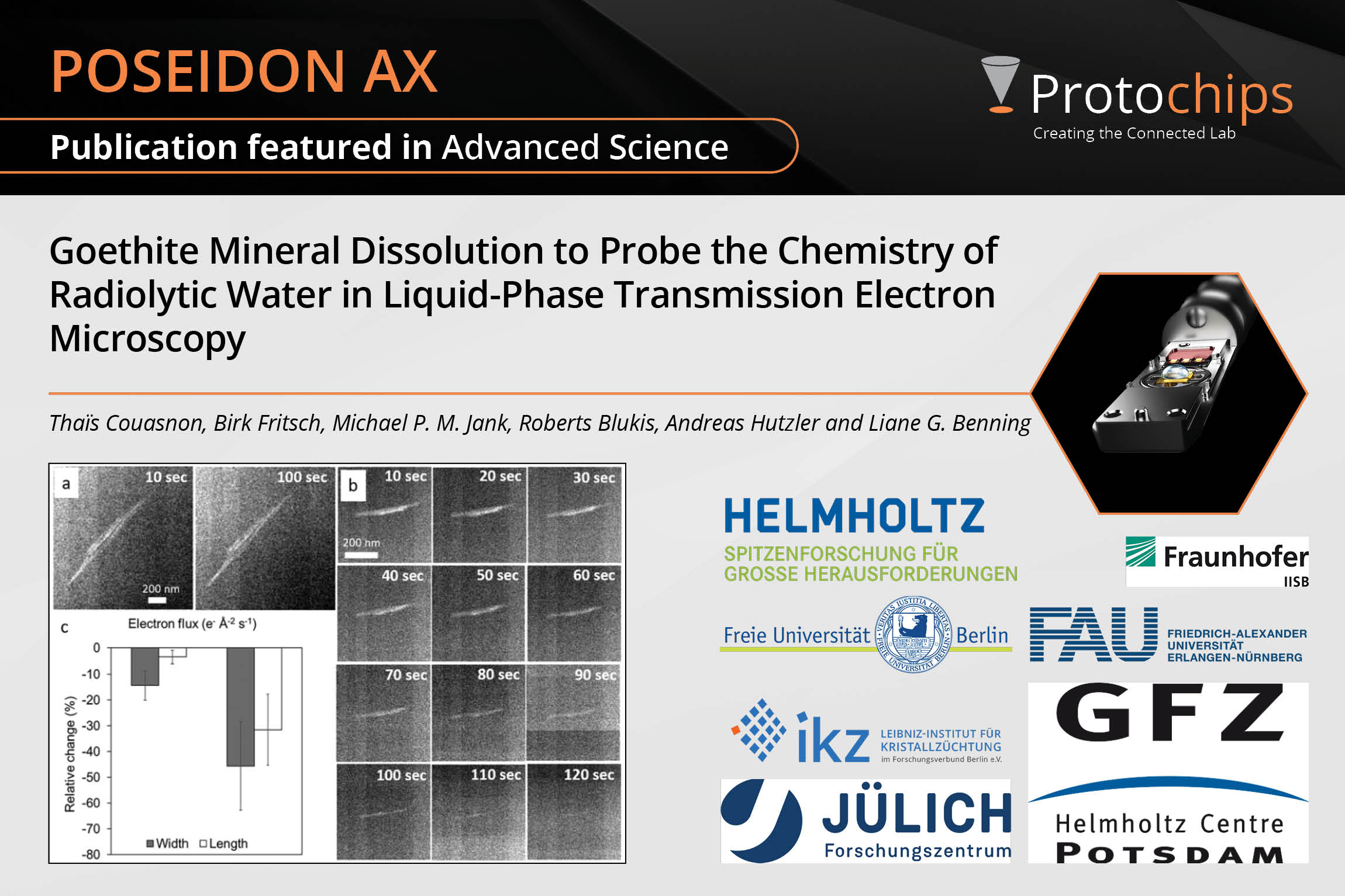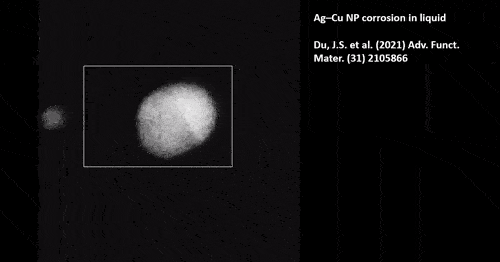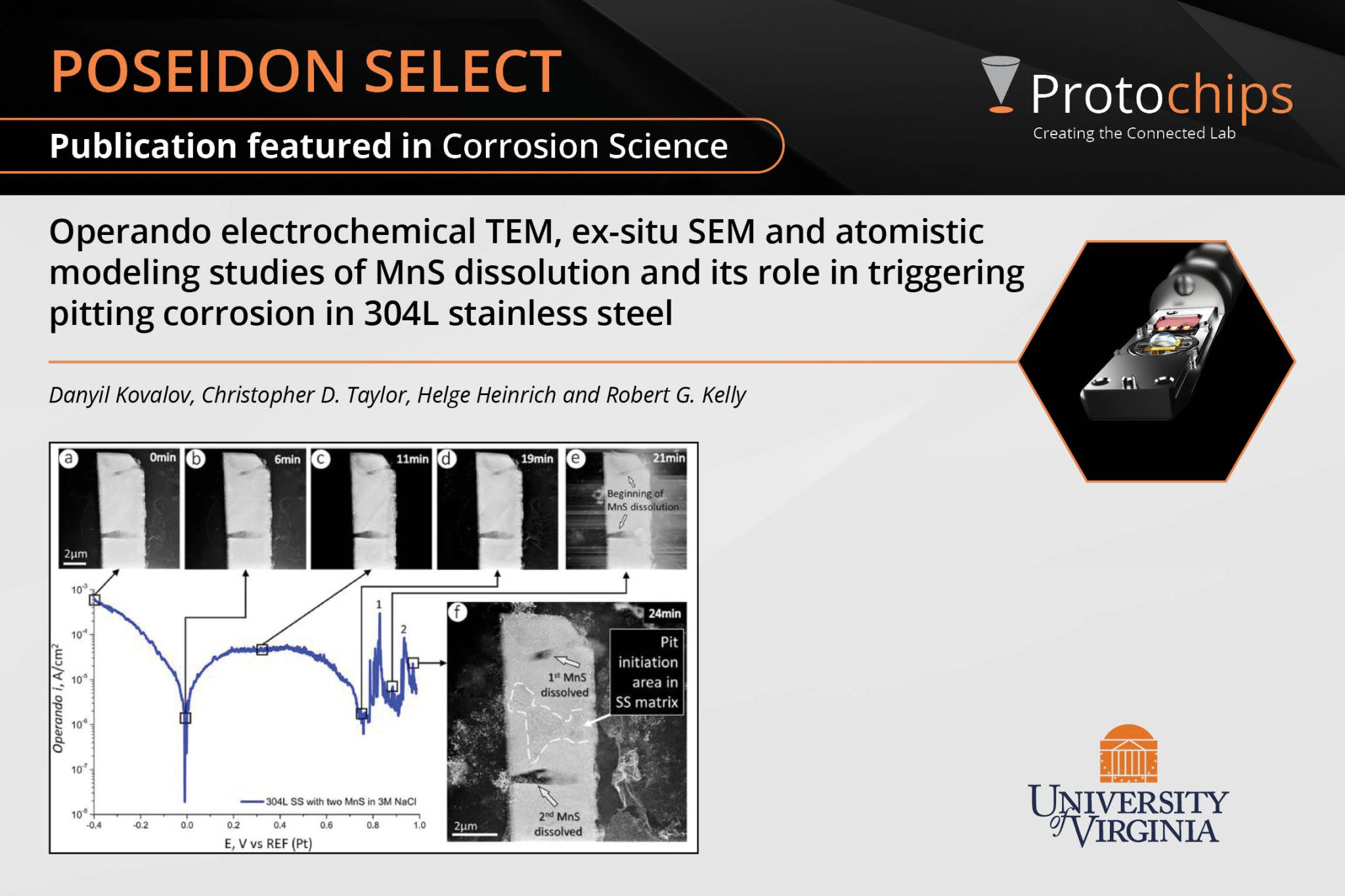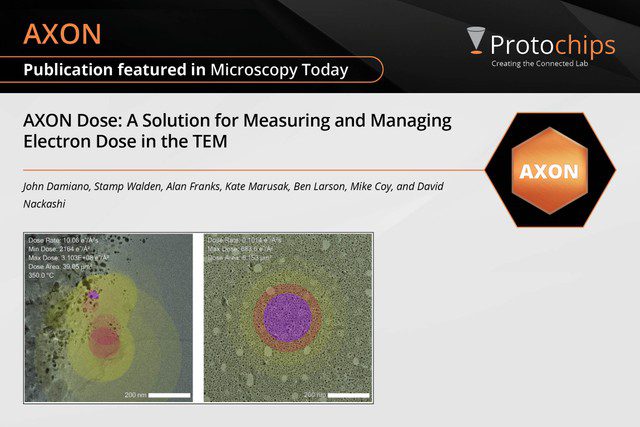
Understanding the nanoscale processes that control corrosion initiation and propagation in bulk materials is a critical area of research. With Protochips’ machine-vision powered suite of in-situ TEM tools you can utilize the electron microscope as a real-time laboratory to study the underlying mechanisms that control corrosion initiation and propagation.

Poseidon AX: Liquid, electrochemical and liquid heating in situ studies
Obtain a well-rounded understanding of the corrosion behavior of materials in a relevant liquid environment by combining in-situ liquid-EM with elemental maps and electrochemical data.
Click here to learn more about our liquid cell solutionAtmosphere AX: Gas and vapor high temperature environment
Observe the early stages of corrosion mechanisms, follow surface and grain boundary migration with elemental mapping, and control the sample environment with relevant temperature, pressure, gas, and humidity conditions.
Click here to learn more about our gas cell solution
Featured Papers
-
News
Goethite mineral dissolut...Sep. 19, 2023 -
News
A Machine-Vision Approach...Sep. 5, 2023 -
News
Elucidating Cathodic Corr...Oct. 17, 2022 -
News
Operando Electrochemical ...Jun. 13, 2022 -
News
Visualizing Dynamic Envir...Nov. 18, 2022 -
News
A Solution for Measuring ...Nov. 15, 2022
What have our users done in the field? Read our summaries here!
-
Corrosion One Pager
Download the one pager that shows how Poseidon AX can be used to study corrosion with in situ electron microscopy.
-
Radiolysis & Liquid-EM
In this application note, written by Protochips, we summarize how in situ electron microscopy using liquid phase is challenged by radiolysis side effects and how to minimize these effects.
-
Using Protochips AXON Software for Tracking Electron Flux and Cumulative Dose
In this paper, we take a look at how AXON Dose tracks the electron flux and cumulative dose, and why this might be useful for all experiments.
-
Direct Observation of Corrosion in Nanocube Electrocatalysts
In this summarized paper, researchers from the Oak Ridge National Lab viewed the realtime corrosion process of nanocubes into nanocages.
-
Dynamic Imaging and Elemental Analysis of Nanostructures in Liquid
In this paper, written by Protochips, nanometer resolution elemental mapping of nanostructures in solution has been demonstrated using the Poseidon system.
-
EDS and EELS analysis in the TEM using the Poseidon Liquid Cell System
This paper, written by Protochips, summarizes different publications on how to best do EELS and EDS in liquid environments.
-
In Situ EELS and EFTEM Analysis in the Liquid Cell
In this paper, researchers in Muller’s group showed how to perform EELS during in situ electron microscopy using a Poseidon system.
Videos
Watch dynamic behavior of real samples in situ.
Electrochemical aging confirms migration and coalescence within a fuel cell. Migration and coalescence are key mechanisms in the degradation of fuel cells. In this experiment a solution of Pt3C0/C and .1M HClO4 is prepared within the electrochemical cell of the Poseidon Select Electrochemistry. The cell was then inserted into the electron microscope for imaging. While imaging the cell, the sample was exposed to a cyclic pattern of electrical stimuli, from -.5V to 1V. Coalescence is observed to correspond to changes in the electrical stimuli of the experiment.
#FindYourBreakthrough | FLASH TALKS: EP #13
Corrosion Studies on AM SS 316L in Liquid Cell TEM
Presented by: Dr. Mengkun Tian from Georgia Institute of Technology – Institute for Electronics and Nanotechnologies. Read the full publication here: https://www.sciencedirect.com/science/article/pii/S0010938X22005777
Products featured: Protochips Poseidon liquid cell system for TEM






